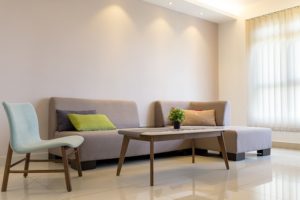When you know the essential interior design principles, you can transform any space in your house to look fabulous. Once you step into a well-designed area, you know how it feels. It’s easy to feel how everything is connected and well-organized. From interior colors to a living room light, you can achieve that effect in your own home with a bit of knowledge of fundamental design principles. You can create beautiful homes by combining this knowledge with practice, experimentation, and a little bit of luck.
Unity and Harmony
 The interior design of a house should be considered as an overall structure. It means that it should include all rooms that are connected by hallways and stairs. The theme and style of the interior design must be consistent throughout. It doesn’t mean that all interior design elements should be the same, but they should complement each other and work well together to create a coherent composition.
The interior design of a house should be considered as an overall structure. It means that it should include all rooms that are connected by hallways and stairs. The theme and style of the interior design must be consistent throughout. It doesn’t mean that all interior design elements should be the same, but they should complement each other and work well together to create a coherent composition.
A harmonious interior can be made by carefully choosing the color scheme that unifies several rooms. A color scheme can be as simple as choosing three or four colors and using them in different shades throughout the house. Using a color wheel can be a good start.
Balance
In terms of interior design, balance is the visual weight distributed throughout a room. There are three styles of balance: symmetrical, radial, or asymmetrical. Symmetrical balance is a common feature in traditional interiors. It is defined by identical objects placed in the same positions on either side of a vertical line. You may be familiar with old-fashioned rooms where each side was a mirror image of the other. This symmetry also reflects the human form. In a balanced environment, we feel comfortable.
Asymmetrical balance in today’s world design is more critical than ever. It is achieved by using different objects that are visually similar and have the same attraction or weight. Although more relaxed and intuitive, asymmetrical balance is more challenging to achieve. Asymmetry is associated with movement, which results in interiors that are full of life. Radial symmetry comes when all elements are arranged around a central point. An excellent example of radial symmetry is the spiral staircase. It is not often used in interiors, but it can provide an interesting counterpoint if used correctly.
Focal Point
The greatest enemy of interior design is boredom. A well-designed space has one or more focal points, depending on its size. A focal point must be strong enough to capture the viewer’s attention and encourage the viewer to look more closely. The focal point must make an impression and be part of the overall décor. The focal point of a room is usually a fireplace or flat-screen television. You can create one if your room doesn’t have a focal point, such as a fireplace. You can highlight a piece of artwork in an area or paint a contrasting color. Look for a balance so that the focal point doesn’t take all the attention.
Rhythm
If we were talking about music, the rhythm would be the beat or pulse of the music. In interior design, rhythm is all about visual pattern repetition. It is defined by continuity, duplication, or organized movement. To achieve these themes in a design, one must consider recurrence, progression, transitions, and contrasts. These elements give a sense of direction in your space and lead the eye from one component to the next.
Recurrence or repetition is the use of the same element in different places. You can repeat a pattern or color, texture, line, or another space component, but you can repeat more than one element. Progression is the process of changing one or more properties by taking part. Progression by size is the most obvious example. A group of different-sized candles on the same tray creates interest by natural progression. A monochromatic color scheme, where each element is a slightly different shade, can also create progression.
Transition is a bit more challenging to define. Unlike progression and repetition, a transition is more fluid. It allows the eye to glide from one area to another naturally. Most people use a curve to guide their eyes, like an arched doorway or a winding path. And finally, we have simple contrast. This design principle involves placing two elements in opposition: like black and white pillows on a sofa. It can be suggested by using different shapes, such as squares or circles. Contrasts can be pretty confusing, though.
Details
Detail is another crucial aspect of interior design. Since it is essential to pay attention to the details, attention should be paid to everything, from the trim around the lampshade to the color of the piping on scatter cushions to light switches and cabinet handles. Unlike color, people find details boring. It means that details are often ignored, skipped over, or even left out altogether. Because color is the heart of an interior scheme, details are equally important. Although details shouldn’t be noticeable, they should be accurate and add to the overall ambiance of a room.


